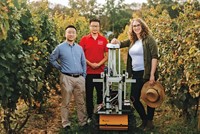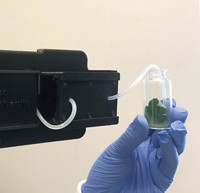Advertisement
Grab your lab coat. Let's get started
Welcome!
Welcome!
Create an account below to get 6 C&EN articles per month, receive newsletters and more - all free.
It seems this is your first time logging in online. Please enter the following information to continue.
As an ACS member you automatically get access to this site. All we need is few more details to create your reading experience.
Not you? Sign in with a different account.
Not you? Sign in with a different account.
ERROR 1
ERROR 1
ERROR 2
ERROR 2
ERROR 2
ERROR 2
ERROR 2
Password and Confirm password must match.
If you have an ACS member number, please enter it here so we can link this account to your membership. (optional)
ERROR 2
ACS values your privacy. By submitting your information, you are gaining access to C&EN and subscribing to our weekly newsletter. We use the information you provide to make your reading experience better, and we will never sell your data to third party members.
Agriculture
Smartphone sensor sniffs out plant disease
A new smartphone sensor may help farmers detect devastating plant diseases
by Giuliana Viglione
August 11, 2019
| A version of this story appeared in
Volume 97, Issue 32
Plant diseases are responsible for up to 40% of annual global crop losses. Many pathogens spread rapidly and are difficult to identify in the early stages of disease. Now, researchers at North Carolina State University have developed a portable sensor for early detection of Phytophthora infestans, a fungus-like microorganism responsible for late blight, which causes $5 billion in global losses annually (Nat. Plants 2019, DOI: 10.1038/s41477-019-0476-y). The team manufactured cysteine-functionalized gold nanoparticles, which aggregate when exposed to (E)-2-hexenal, a volatile organic compound (VOC) marker of P. infestans infection. They deposited the nanoparticles on paper strips, along with organic dyes that change color in the presence of other disease-signifying VOCs, and used a 3-D-printed smartphone attachment to sample tomato leaf emissions. The resulting phone images have to be analyzed on a computer, says team leader Qingshan Wei, but he hopes to build a mobile interface. The sensor was field-tested on both healthy and infected plants; according to DNA test results, the team’s sensor diagnosed P. infestans infection correctly 95% of the time. Wei hopes one day to build systems that will continuously sample fields for multiple plant diseases.




Join the conversation
Contact the reporter
Submit a Letter to the Editor for publication
Engage with us on Twitter